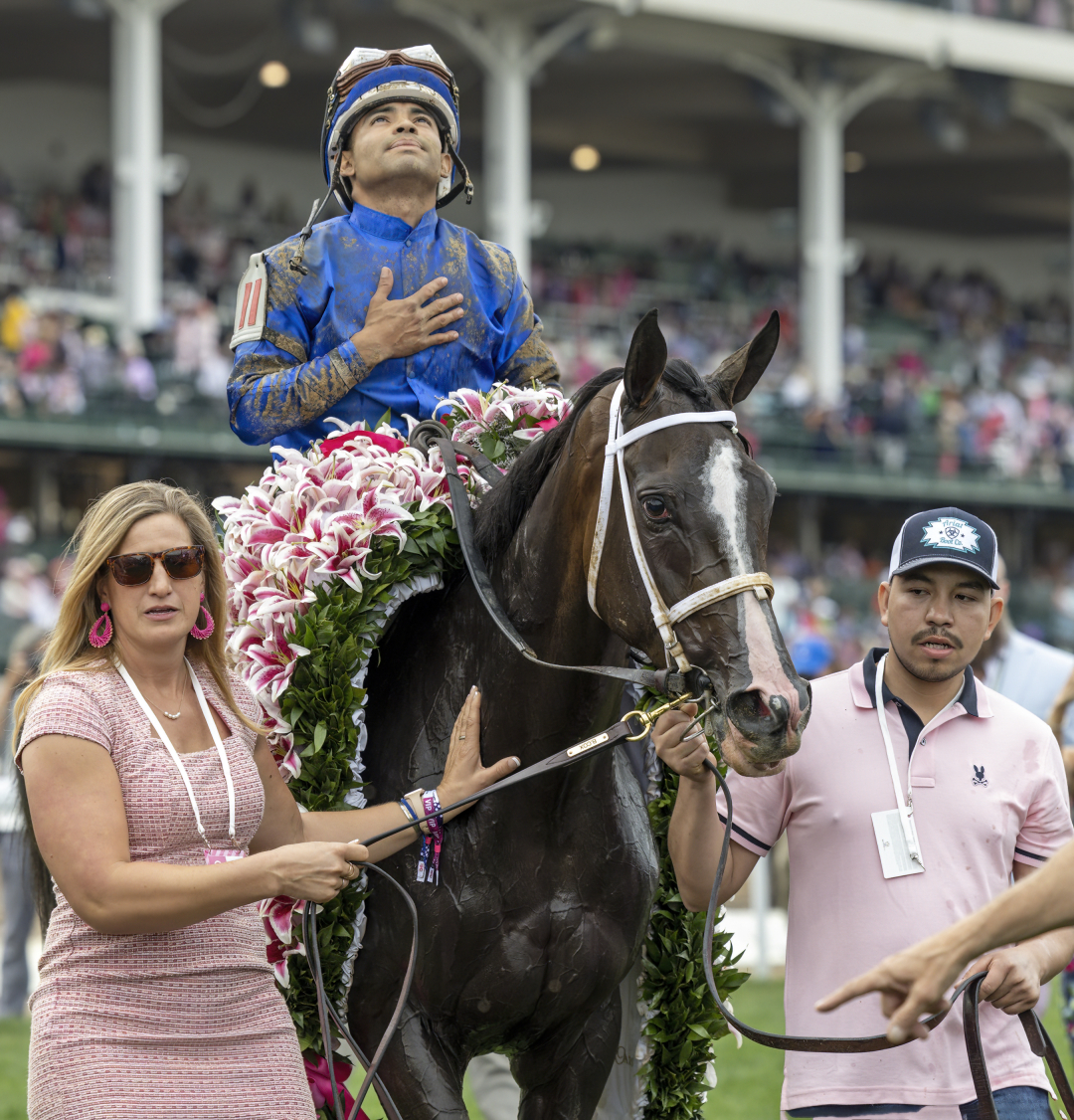SARATOGA SPRINGS, N.Y. -- Churchill Downs Inc. will devote additional resources to its promotion of the Kentucky Oaks in the coming years in an effort to expand the race’s popularity beyond the local market and the sport’s traditional fans, the company’s chief executive officer, William Carstanjen, said during remarks at the Racing and Gaming Conference on Tuesday in Saratoga Springs.
Speaking as the conference’s lunchtime keynote speaker, Carstanjen repeatedly stressed the notion of “bursting past the racing bubble” in his remarks on the Oaks, which is traditionally held the day before the Kentucky Derby on the first Saturday in May.
Churchill and the company’s broadcast partner, NBC, announced one month ago that the Oaks post time will be moved into prime-time broadcast slot on NBC’s flagship broadcast network next year, sometime between 8 p.m and 9 p.m. Eastern time, the latest the race has ever been run. The Oaks, which began in 1875, the same year as the Derby, has traditionally been run between 5 and 6 p.m.
Carstanjen said on Tuesday that the shift to prime time and to a major network will likely increase viewership of the race from 300,000 this year, when the Oaks was broadcast on the USA network, to 1 million in 2026.
Carstanjen cited growing viewership and handle numbers for the Kentucky Derby over the past 10 years as proof that racing can increase interest in its events. He also said he believed that existing events like the Oaks would have an easier growth path than events that have less tradition and history.
“It’s not easy to create new events in the U.S.,” Carstanjen said. “It’s hard to cut through the clutter and the morass to reach people en masse.”
“[Moving the Oaks to a prime-time broadcast slot] will be a great opportunity to build this race, to introduce it to a new audience,” Carstanjen said. “We’re not just comfortable with the Kentucky Derby, we’re going to build a big new national day.”
The Oaks is already incredibly popular in Louisville as a spectator event, though the crowds for the race now contain far more out-of-town spectators than when it was known as “Louisville’s Derby” two decades ago, a term referring to the preference of locals to attend the Oaks while avoiding the tourists on Derby Day. That term has fallen out of favor among Louisvillians over the last decade as they instead attend cards earlier in the week due to the rising popularity of the Oaks and skyrocketing ticket prices.
The Oaks card has already become one of the highest-handling days on the national racing calendar. Last year, handle on the 14-race Oaks card was $73.9 million, which ranks it near the top five one-day events in racing, behind the Triple Crown race cards and the Saturday Breeders’ Cup card.
But Carstanjen said that the company sees much bigger growth ahead, anchored by the change in post time. No Grade 1 races are currently broadcast in prime time on major networks, so next year’s Oaks results will serve as something of an acid test for an industry that has persistently avoided prime-time competition in the past.
“Once you get to [to the edge of] that racing bubble, you have to try to burst through it and get to America as a whole,” Carstanjen said.
:: Want to learn more about handicapping and wagering? Check out DRF's Handicapping 101 and Wagering 101 pages.

